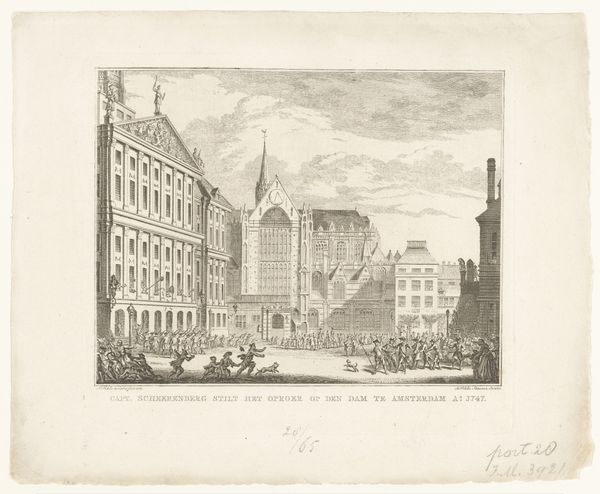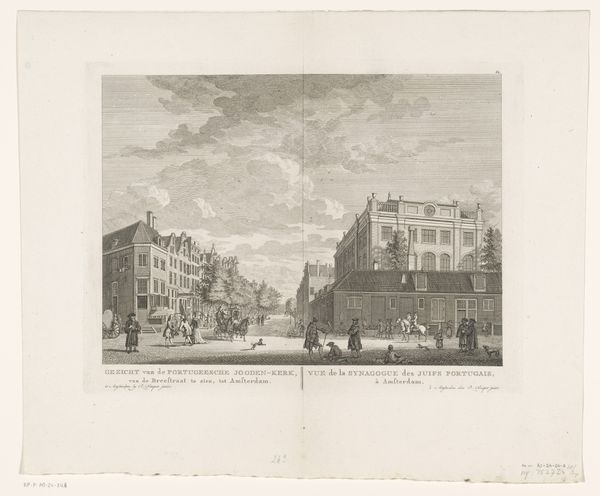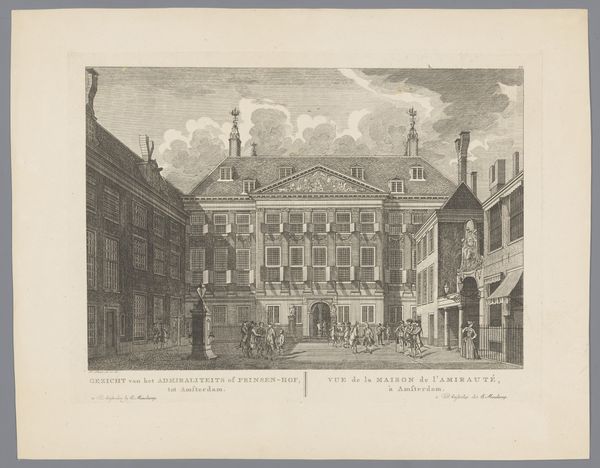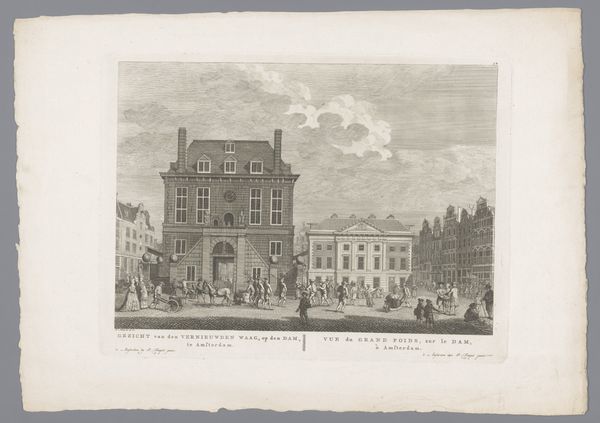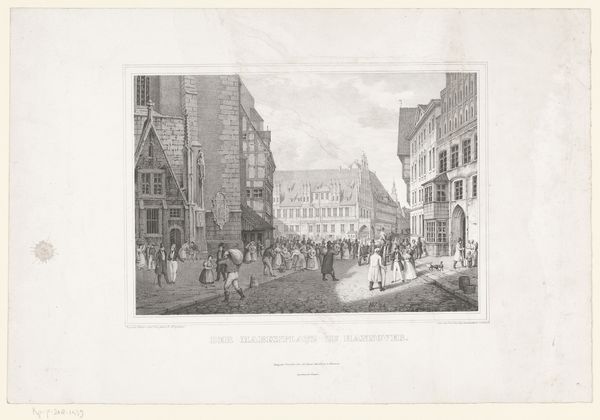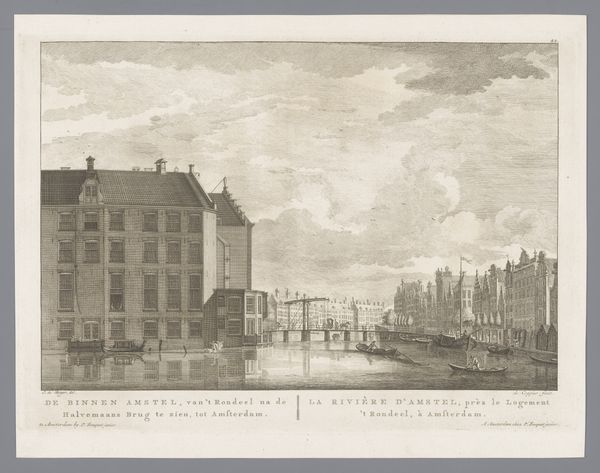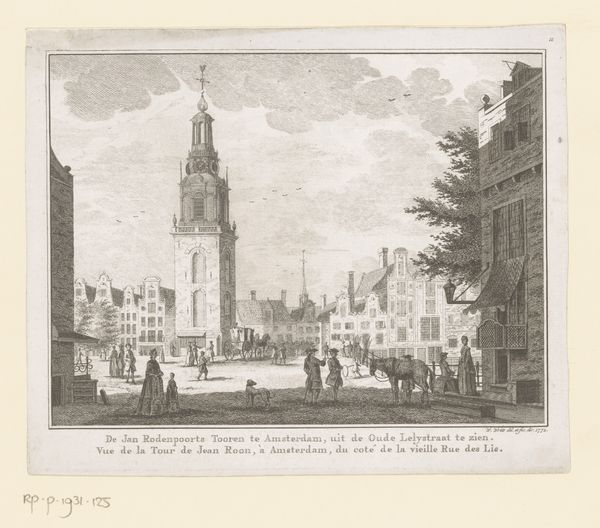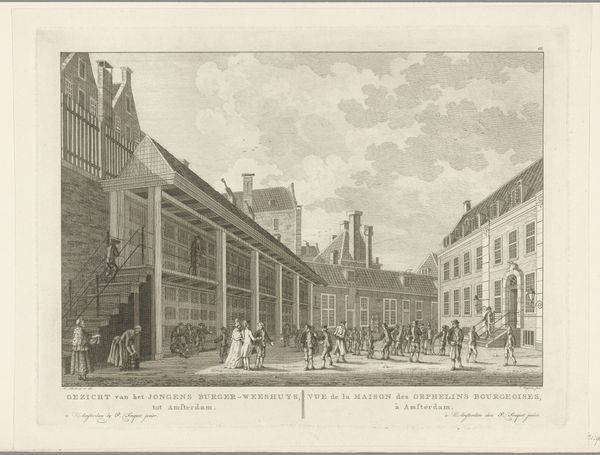
Gezicht op de Heilige Stede (Nieuwezijds Kapel) te Amsterdam c. 1770 - 1783
0:00
0:00
hermanuspetrusschouten
Rijksmuseum
Dimensions: height 276 mm, width 364 mm
Copyright: Rijks Museum: Open Domain
Curator: This is "View of the Nieuwezijds Chapel in Amsterdam," an engraving by Hermanus Petrus Schouten, dating from around 1770 to 1783. It's currently held at the Rijksmuseum. Editor: My initial impression is one of remarkable detail and depth of field for a print. The linear perspective creates such a pull into the city's heart. Curator: Absolutely. Schouten was very interested in spatial relationships, in creating a visual narrative of the city's development, specifically the Nieuwe Zijde. The placement of the Nieuwezijds Chapel helps frame that narrative. What about the baroque elements? Editor: We can note them, of course, but the reality is this chapel became the point of contention when reformed elements saw its grandeur as papist excess. In 1783 they seized control and tore most of it down, a fascinating cultural pivot documented only through such art. The engraving thus becomes invaluable from a sociopolitical angle. Curator: I'm captivated by the repetition of form – the windows, the rooftops, the patterns that emerge. These build a complex geometry that contributes to a sense of organised chaos. This structure gives a rich interplay of light and shadow. Note how effectively Schouten utilizes hatching techniques to imply varying textures. Editor: And the people, don't forget the human dimension! Consider the lines of townsfolk interacting right in front of the Chapel; are these people in procession? Are they petitioners, worshippers? These small details invite narrative speculation and underscore the church’s centrality in urban Amsterdam’s communal and personal lives. This work asks us about Amsterdam's values then. Curator: Yes! But, even in that, how meticulously each figure is rendered. The formal balance with which he uses architectural verticals against those groups clustered there... fascinating! Schouten clearly understood principles of art and design at a high level. Editor: Indeed! Each time I engage with this cityscape, my understanding deepens around social currents rippling underneath Amsterdam. An artful social record is etched carefully on display for viewers. Curator: And, through close viewing, Schouten teaches us how line, form, and tonality could construct, a perfect image – that lives well beyond the historical moment in this engaging portrayal. Editor: Precisely. These layered analyses are testament enough on why an understanding can enhance everyone’s encounter during that critical transitional period!
Comments
No comments
Be the first to comment and join the conversation on the ultimate creative platform.

